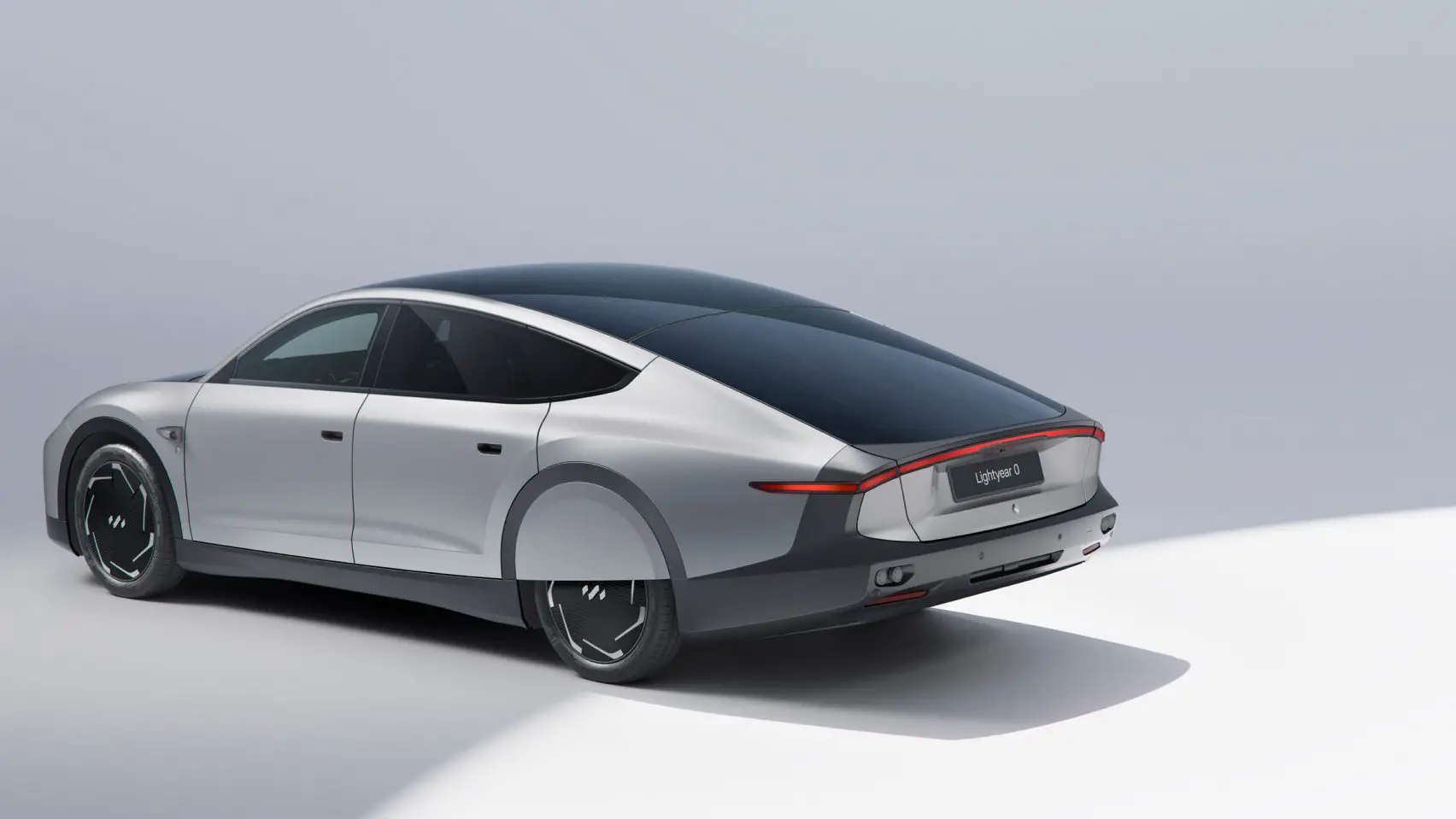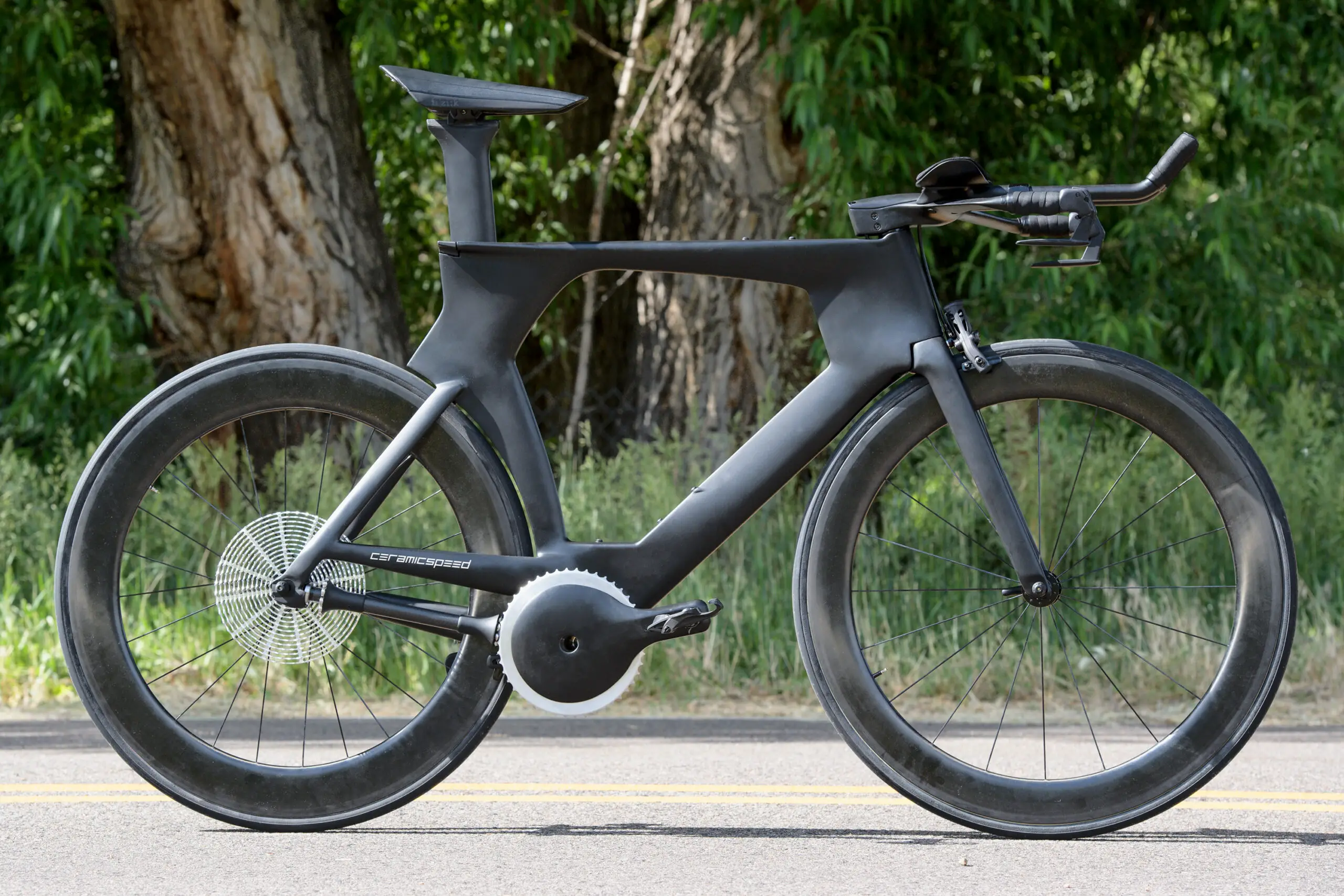The Dutch company Lightyear has spent six years developing technologies to make the world’s first solar-powered electric vehicle. It has now reached a very important point in its life. A press release from the company said its first model, Lightyear 0, is now being made.
As the world moves toward electric ways to get around, new problems come up. Unlike cars with internal combustion engines, which can be refueled almost anywhere and quickly, electric cars need a charging station and time to charge the batteries.
In the past few years, charging times have gotten a lot shorter thanks to improvements in battery technology. Lex Hoefsloot, the founder and CEO of Lightyear, thinks that the fast switch to EVs will mean that many vehicles will want to use the charging infrastructure, which won’t be able to keep up with the demand.

Five square meters of curved solar panels were put on the top, front, and back of the Lightyear 0 car. These panels will turn clean solar energy into electric power for driving.
The car is powered by both traditional electric charging and solar power. This means that people could drive and charge at the same time.
The company plans to send out the car, which it calls “the world’s first production-ready vehicle,” in November for €250,000 (£215,000).
Lightyear’s decreased reliance on charging stations
According to Lightyear’s tests, the solar cells may add up to 70 kilometers (44 miles) each day to the car’s 388-mile range when charged conventionally.
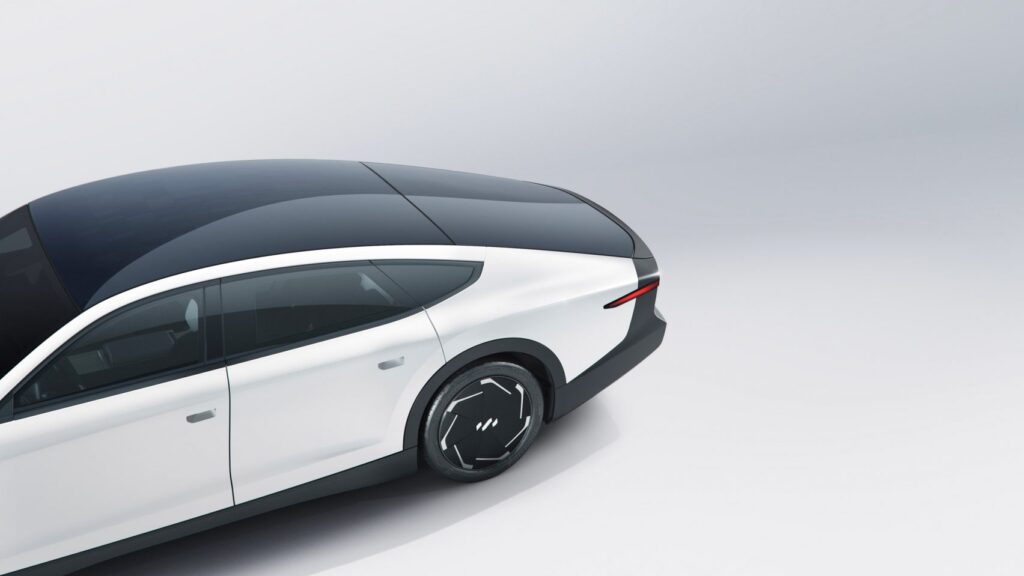
In sunny areas like Spain or Portugal, a driver traveling 35 kilometers (22 miles) per day might operate the car for seven months without needing to charge it at a public or home outlet; in colder countries like the Netherlands, it could survive for two.
“Lightyear 0 incorporates five square meters of patented, double-curved solar panels, allowing the car to charge itself while travelling or merely parked outdoors,” according to the company.
“In ideal conditions, this allows Lightyear 0 to add 70 kilometers of range every day to its estimated 625 kilometers of Worldwide Harmonized Light Vehicle Test Procedure (WLTP) range.”
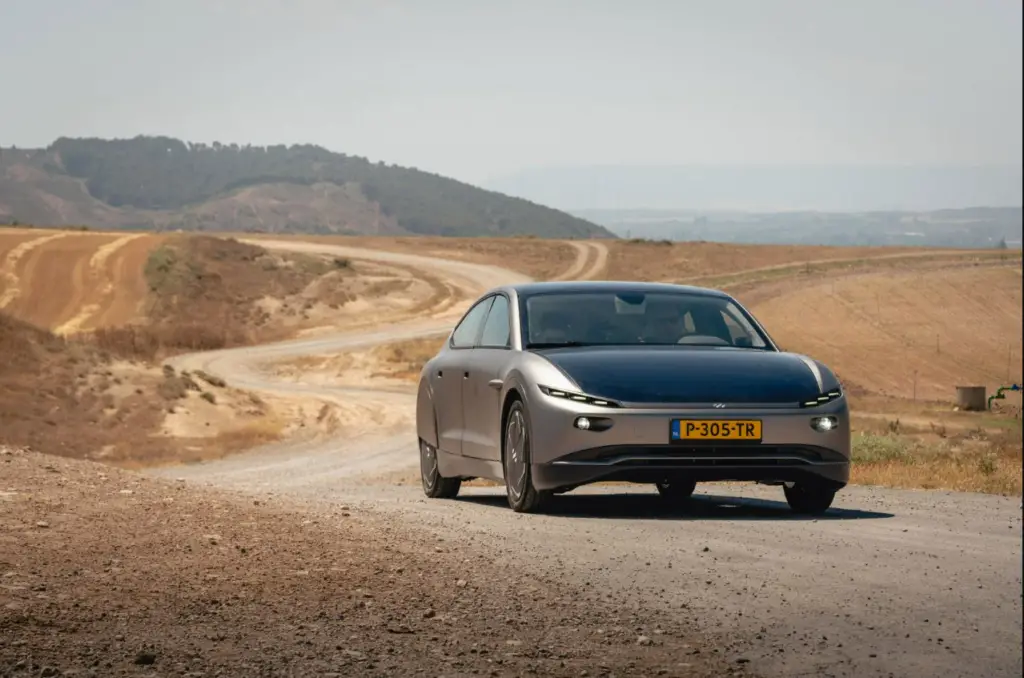
Difficulties charging electric cars – often known as “range anxiety” – and finding suitable and available charging stations is a significant reasons why UK individuals are hesitant to buy or use an electric car.
The British government has sought to address this issue by passing legislation requiring electric car charging outlets in all new residences and non-domestic buildings in England.
Lightyear intends to counteract this with a car that charges while the driver is on the road.
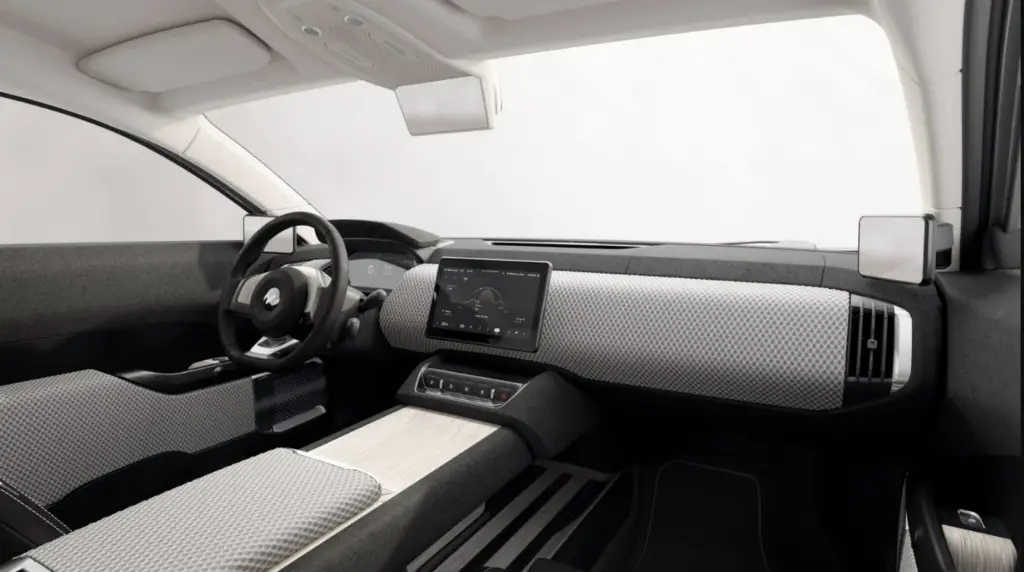
A user interface on the car’s touchscreen dashboard gives cloud-based information to consumers as they drive, such as charging status, how much solar energy is absorbed, and which panels are now soaking up the sun’s rays.
According to Lightyear, drivers may charge over 300 kilometers of range overnight by plugging into a standard household power connection.
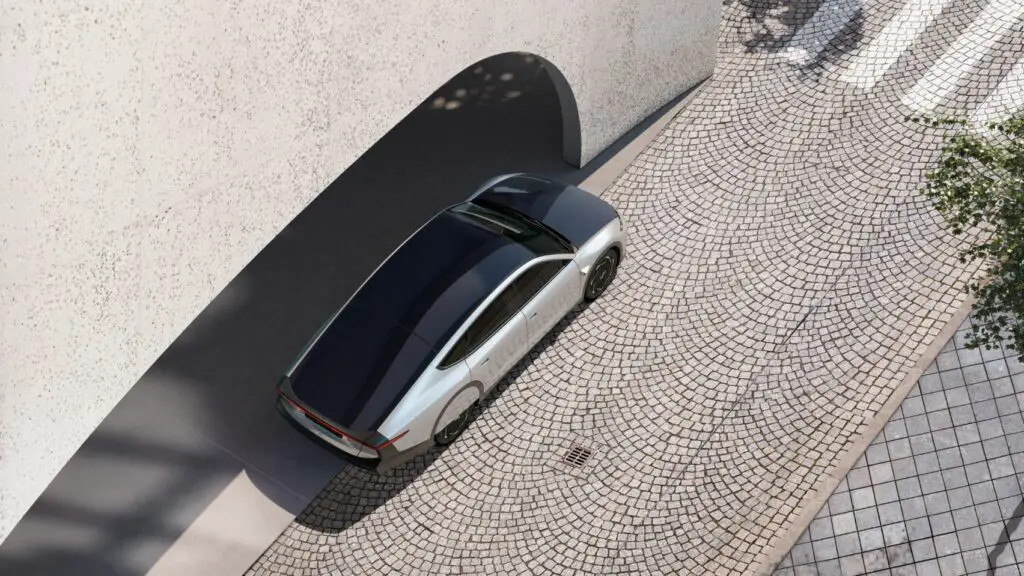
“When plugged into a standard household socket, Lightyear 0 can still charge two times faster than a comparable electric car with a comparable battery size,” the company claimed.
Specification of Lightyear
The four-wheeled automobile, which measures five meters long, weighs 1,575 kilos, and has a peak speed of 160 kilometers per hour, can seat five passengers.
The body of Lightyear 0 is built of recovered carbon fiber and aluminum panels. Lightyear 0 sports four cameras instead of mirrors: one for the rearview, one for parking, and two for the sides.

Overall, the drag coefficient of the automobile is less than 0.19. A low drag coefficient indicates that the automobile uses less energy and can thus travel further.
Lightyear 0’s interior is constructed of vegan and organically derived materials, including ecological microfiber suede seats and rattan palm accents.
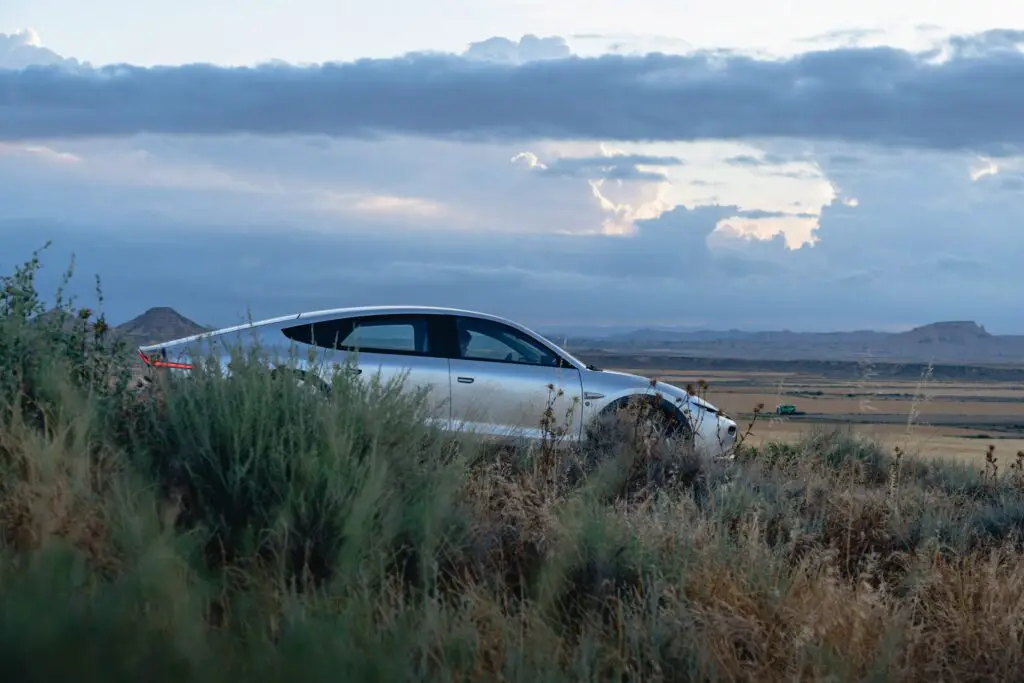
Lightyear Futures Plans
“Through Lightyear 0, we are delivering a new future for motorists who desire the freedom of mobility combined with the peace of mind that comes from using sustainable energy, and that future begins now,” the brand stated.
“This elite solar car is set to go into production this autumn, after six years of research and development, design, engineering, prototyping, and testing.”
This year, Lightyear wants to make 946 Lightyear 0s. It said that its next model, which is being made to be made in large numbers by the end of 2024, will start at a lower price of €30,000 (£25,915).
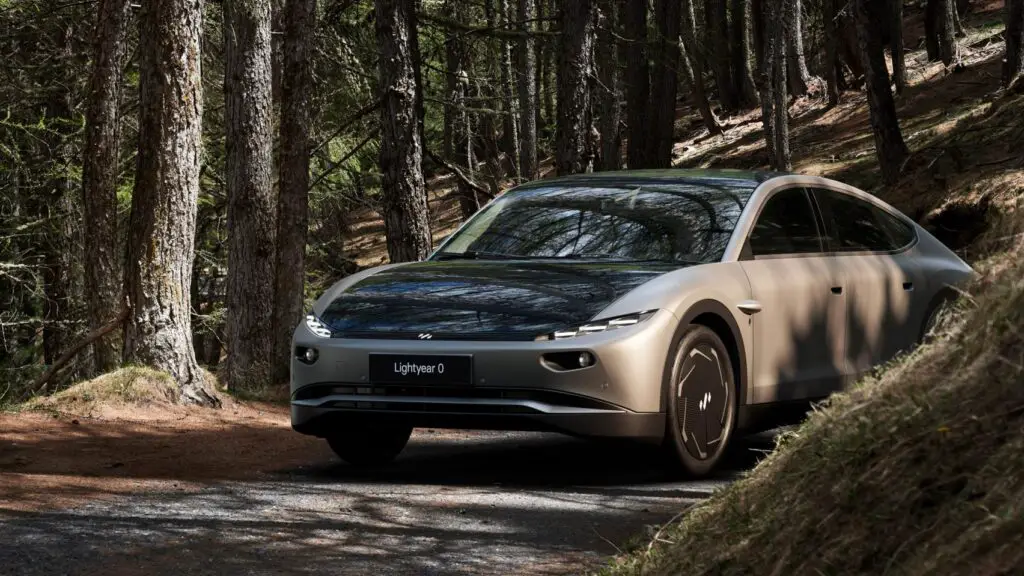
In the past few years, more and more people have become interested in cars that run on solar energy. Mercedes Benz and the late fashion designer Virgil Abloh worked together on a solar-powered electric car with a clear front bonnet.
Audi has worked with Hanergy, a Chinese company that makes solar cells, to make thin solar panels that can be put on the roofs of cars.

